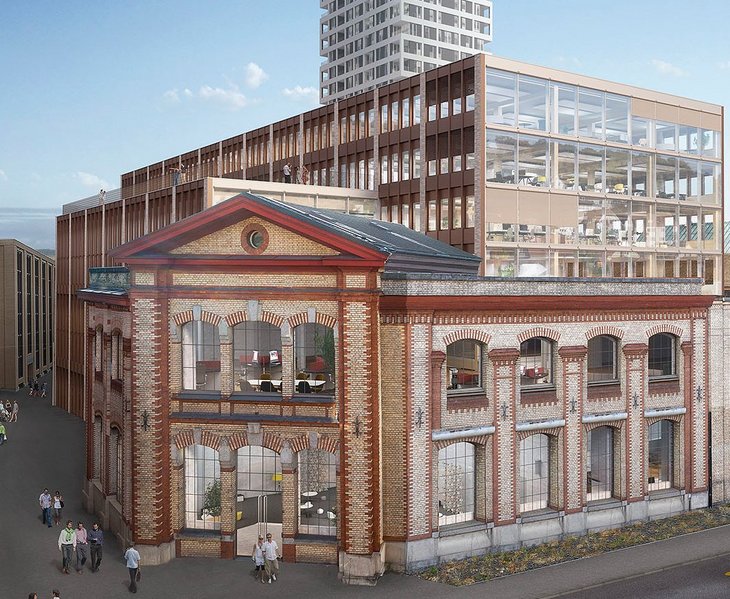
Seize opportunities. Control risks.
Valuable data
The basic premise is to systematise meticulousness. And to do so right from the start. Because if we want to ensure that a project will be technically and commercially delivered with success, we need all the relevant facts at hand as soon as we start the acquisition and tendering process. There are always a wide range of factors to be considered in construction projects, so it is essential to have a well-founded overview in advance. Value Assurance uses detailed data analysis to improve the project steering and the profitability assessments. On this basis we can evaluate any project in the acquisition phase and monitor it throughout the entire process.
The new framework concept “Value Assurance” is based on five core elements
The new framework concept “Value Assurance” is based on five core elements
Two central process milestones were introduced for larger and more complex projects (Class I and II projects) in 2019: Project Selection and Tender Approval. With reference to these milestones we start the whole process off by registering and assessing potentially interesting projects using a selection checklist. Axel Metzger, Head Value Assurance: “The most important new feature is an automated classification matrix, which we use to divide all projects into one of four different classes according to their complexity. In doing so, we very clearly prioritise strategically and financially attractive projects.” In the next step, Value Assurance Committees (VACs) choose which projects to pursue. The membership of the VACs is determined by the project class. So large-scale projects with a high degree of complexity are assigned to Class I and decided by CEO, CFO and General Counsel.

“We very clearly prioritise strategically and financially attractive projects.”
Axel Metzger
Head Value Assurance
The Value Assurance process was extended to the other project Classes III and IV in December 2019. Numerous different teams at national and branch level take care of these. “We expect there to be a short adaption phase because the new system marks a significant change from previous practice. However, we are confident that Value Assurance will also be firmly established for Classes III and IV by the end of the first quarter of 2020,” says Axel Metzger. Feedback from employees has been overwhelmingly positive, with an especially good reception for the clear, standardised specifications. As part of the continuous improvement process, all measures and procedures are repeatedly reviewed, and adjusted where necessary. Axel Metzger: “There is naturally some overlap here and there between the old and new systems, but we are sorting that out. Such overlaps are quite normal at this stage and we’re working to accelerate the learning process further in order to achieve a noticeable simplification by April.”
Six steps to higher quality results: the Value Assurance process
Six steps to higher quality results: the Value Assurance process
Six steps to higher quality results: the Value Assurance process
Implenia plans to introduce Value Assurance to the execution phase in 2020, thus bringing the entire project cycle into the system. Regular coordination meetings will be held between the team executing the project and Implenia specialists who are independent of the project in order to identify problems as early as possible.
These “intermediate project reviews” are being introduced for Class I and II projects first of all. We are also working on the development and introduction of a data-supported decision-making aid. We want to use artificial intelligence (AI) to find out how our data and our actual experiences correlate with specific project and environmental parameters. And what conclusions we can draw from this.
Digital processes
Implenia is working intensively on Project INSPIRE with the aim of embedding relevant aspects of digitalization, such as artificial intelligence, in the company. INSPIRE stands for “Integrated New Solutions for Processes at Implenia Reaching Excellence”. The aim of this programme is the end-to-end harmonisation and optimisation of processes at corporate level. It is built around a global platform based on RIB iTWO and SAP S/4 HANA, which is used by everyone and which provides everyone with comparable data. The benefits are clear: greater transparency and comparability, universal availability thanks to cloud-based and mobile solutions, and increased efficiency thanks to standardised processes. Tobias Grob, Project Lead INSPIRE & Head Center of Excellence Digital Construction: “We’re exploiting the potential of digitalization. INSPIRE allows a systematic integration of BIM into our core processes, supports the Value Assurance approach, and improves digital collaboration with our partners, customers and employees.”

are already harmonised internationally and across functions

are already harmonised internationally and across functions




